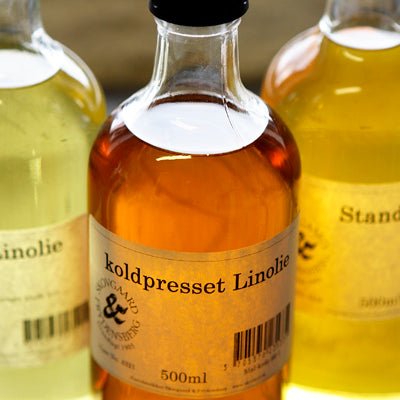
Sådan hærder man stålet hos producenten Narex
Søren Ulrich
Sådan hærder Narex deres stål.
Denne tekst er på engelsk, dansk tekst på vej.
Chrome-Manganese Tool Steel.
The Chrome Manganese (Cr-Mn) steel used in Narex chisels is a low-alloy high-carbon steel developed specifically for making edge tools using the isothermal hardening method.
High carbon tool steel is usually hardened by quenching in water or oil at ambient temperature. This thermal shock triggers a transformation from the uniform solid solution of iron and carbon known as austenite to a very fine crystalline structure called martensite. Most of the martensite formation occurs after the quench as the steel cools back down to room temperature. Martensite is a superfine, very hard but also very brittle structure, so the steel needs to be heated again at a lower temperature in a process called tempering which converts the martensite into a much stronger, very fine two-component (ferrite and cementite) structure. This process was the first method of hardening steel and is still by far the most common.
Air hardening tool steels don’t need a thermal shock, but they do need to be cooled to well below ambient temperature in order for the austenite to convert, this is known as cryogenic hardening. When air hardening steels are tempered they don’t convert fully, the process produces a ferrite/cementite structure but also more martensite. Repeating the tempering process converts a proportion of the remaining martensite each time so the overall percentage of ferrite/cementite increases with each tempering. This is why you will sometimes hear these steels described as ‘double tempered’ or ‘triple tempered’. Another characteristic of air quenched steels is that they cannot be differentially hardened.
Isothermal hardening differs from both of these methods in that there is no separate tempering stage. The steel goes straight from austenite to bainite (a ferrite / cementite structure similar to tempered martensite) without going through a martensitic stage first. The steel is hot quenched in a bath of molten salt at 200 degrees C, left to soak at this temperature until the crystalline structure is fully formed and then cooled back to room temperature in a water shower. This is a very gentle and accurate hardening technique, so the results are consistent and produce a fine, uniform grain structure with virtually no deformation.
Isothermal hardening is normally associated with the manufacture of high performance springs, where the consistent and even hardening produces reliable and predictable behaviour and a long service life. Narex use a similar technique to produce very strong chisels with edge taking and holding properties that closely resemble better quality traditionally manufactured carbon steel tools. Although expensive to set up in the first place, the isothermal process involves fewer steps and a near zero reject rate, so on a per-unit basis it is a very efficient way to make high quality tools.
Chrome-Manganese Tool Steel
Care and sharpening requirements for Cr-Mn are the same as for normal martensitic carbon steels like O1, EN34 and T10. For cabinetmakers chisels and carpenters chisels, grind at 25 and hone at 30 degrees. For mortice chisels grind at 25 and hone at 35 degrees. For paring chisels grind at 20 and hone at 25 degrees. Honing angles can be adjusted slightly to compensate for the specific circumstances in which your chisels are used - a little steeper for greater edge durability or a little shallower for easier cutting if you can get away with it.
Although Cr-Mn contains some Chromium it is not present in sufficient quantity to make the steel stainless (at the concentrations required to make steel stainless, edge taking ability begins to be compromised). Careful storage and a wipe down with a light non-hardening oil after use will keep your chisels in good condition. An unusual characteristic of Cr-Mn steel is that it cannot be etched, so the blades must be printed instead, contact with solvents or abrasion may therefore remove the markings on the blade. Narex chisels are ground before being hardened, so you may find that edge retention improves significantly after the first couple of honings, this is completely normal and once the first couple of millimetres have been sharpened away you will begin to experience what a pleasure Cr-Mn steel is to use.



